History Of The Opera House: Angels Horn And The Classic Gramophone With Temperature
History of Phonographs
On November 21, 1877, Thomas Edison first recited the nursery rhyme "Mary had a little lamb" into his phonograph machine. The recording was captured onto tinfoil around the edge of a spinning cylinder. Today, many people believe that this event marked the birth of recorded sound. However, it wasn't the first time that the human voice had been recorded. For thousands of years, people had experimented with capturing sounds for later playback.
The knowledge that sound can be recorded goes back to around 3000 B.C. when ancient Egyptians tried storing harp music by cutting it into stone carvings. Historians know very little about this experiment, but there is some indication that the carvings played back the tones of a harp when they were rubbed with a rod.
During the fourth century B.C., Aristotle was one of the first to write about this method for capturing sounds and reproducing them later. He described what is thought to be the earliest known mechanical playback device, which used echoes to recreate the sound.
Several centuries later, a similar device was built by a Greek inventor named Ctesibius of Alexandria. This invention used a water clock to control the playback speed and a series of pipes that produced different sounds as they were played through.
By A.D. 300, musical recordings had spread to China, where people carved poems and songs onto stone walls. The recording would playback when the surface was hit with a stick, producing sounds similar to modern-day xylophones and woodblocks.
In 1456, German inventor Johann Gutenberg designed a tool that used metal disks to print words and etch images into them. His tool was able to store and print up to 36 images on a disk, which inspired others for centuries.
Although it wasn't the first time that sound had been recorded, Thomas Edison's phonograph of 1877 was one of the most important early steps toward modern recording devices. Edison first had the idea for a machine that could record and playback sound in 1877, when he was working on a device that could send telegraph signals along telegraph lines.
An important part of Edison's machine was the tinfoil phonograph, which consisted of a vibrating membrane that turned sound into vibrations and recorded them onto sheets of tinfoil. The machine didn't have much luck when it came to playing back the sound, but it did show that audio recordings were possible.
Edison's machine was later improved by Alexander Graham Bell, who created the graphophone in 1885. It had similar parts as Edison's phonograph; however, its tinfoil sheets were replaced with wax cylinders and its sound-recording membrane was made out of an inked ribbon that was pulled across the cylinders.
This gave much clearer sound quality, but the phonograph still wasn't a practical listening device because it didn't have any way to amplify the recorded sound. The next major improvement came from Emile Berliner, who invented the gramophone in 1887.
Berliner's machine didn't pull sound vibrations across a recording cylinder or sheet of tinfoil, which made it easier to make louder recordings without wearing down the recording medium. It also allowed multiple recordings to be played back on one disk by using small grooves that were placed closer together during the manufacturing process.
Berliner's machine was the basis for most modern recording devices, including phonographs and cassette recorders. In 1900, he also created a disk that held two records side by side, which made it possible to playback stereo phone recordings.
1920s record player
The 1920s record player was an invention in the early 20th century that revolutionized how people listened to music by introducing recorded records.
The record player is an old technology, with its first instance invented in 1888. The idea of recorded sound on cylinders and later discs had been experimented with earlier in history but it wasn't until Thomas Edison's invention of the phonograph in 1877 that it really caught on, making people's lives more convenient. Edison continued to improve his invention until he finally got it right by doing things like modifying the stylus and tonearm wires for better sound quality.
Later in 1888, Emile Berliner invented another type of record player called a gramophone, which was a huge improvement from Edison's phonograph. In the early 20th century, record players became convenient appliances that people could use to listen to music as they were going about their daily business, before the era of the radio and mp3 player even began.
In 1888 Emile Berliner invented another type of record player called a gramophone, which was a huge improvement from Edison's phonograph. In the early 20th century, record players became convenient appliances that people could use to listen to music as they were going about their daily business, before the era of the radio and mp3 player even began.
Record players like this 1920s model were commonly used until after the Second World War when the phonograph was replaced by new technologies like the radio and electric record player.
The ability to play music on a record player means that songs were recorded for the first time. People no longer had to perform music live in front of audiences, which meant that musicians could play around with new types of songs and sounds that couldn't be done on stage.
The 1920s record player was an invention that revolutionized how people listened to music by introducing this type of recorded record.
1970s Record Player
A record player is a device that plays sound recordings. The term "record player" typically refers to turntables, but can refer to reproduced media using almost any other method such as cassette tapes or CDs.
Description of the 1970s record player
The first commercial record players were developed by American inventor Emile Berliner in 1887. At first they were sold only in Europe, but become popular in the US also.
Description of record player parts
A record player typically consists of these parts:
- Turntables that hold the record and rotate it using a motor,
- A tone arm on which each side has three parts: the pivoting tone arm with an upturned stylus fixed on its back end, the phono cartridge containing small metal granules mounted in line with the stylus, and the counterweight that balances the tone arm
- A protective cover for both sides of a vinyl record
- Speakers or headphones so sound can be heard
Parts of 1970s record player
A typical 1970s record player had these parts:
- A combination of a record player, cassette tape recorder and radio receiver.
- Turntable with built-in speakers
- Two headphone jacks for sharing music without disturbing others.
History of the 1970s record player
The 1960s brought new technology to popular music with the invention of the cassette tape and a new method of reproducing music, the 8-track. The 1970s saw technology that allowed for home stereos to reproduce sound in multiple rooms, while still using vinyl records.
Description of 1970s record player use
The main use of a record player is to play music through speakers or headphones. They are also used to copy cassette tapes to CDs, transfer vinyl records onto cassette tapes or CDs, and for casual listening.
Description of 1970s record player parts
Parts included a tonearm with three pieces: an upturned stylus fixed on its back end, the phono cartridge containing small metal granules mounted in line with the stylus, and the counterweight that balanced the tonearm.
A record player typically consists of these parts: turntables that hold the record and rotate it using a motor, tonearm with three pieces: an upturned stylus fixed on its back end, the phono cartridge containing small metal granules mounted in line with the stylus, and the counterweight that balances the tonearm, speakers or headphones so sound can be heard.
A typical 1970s record player had these parts: a combination of a record player, cassette tape recorder and radio receiver, turntable with built-in speakers, two headphone jacks for sharing music without disturbing others.
1980s Record Player
For people who love listening to records, vinyl has made a comeback. One type of record player that is popular in the 2010s, but was also common during the 1980s, is the belt-driven turntable. Belt drives were used with record players because they are less expensive than direct drives; however, belt drives tend to generate more noise and static electricity.
A record player has a rotating platter that holds the vinyl and an arm with a needle, or stylus. The stylus's vibrations, when in contact with the grooves on the record surface, produce electrical signals. These signals are transmitted to an electromagnetic coil (included in systems with attached speakers), which amplifies them. The amplified electrical signals are then transmitted to a speaker which produces sound from the amplified signal.
In the 1980s, CD players began replacing record players for playing music. However, some people still prefer listening to vinyl records because they provide a more "authentic" music experience and allow listeners to buy albums with better artwork. In addition, record players tend to be more affordable than CD players.
The sound quality of modern vinyl records is often better than that of CDs, which can degrade over time. Some people believe that the "warmth" in the sound produced by vinyl is due to distortions introduced during playback; however, when lasers were invented for playing back CDs (and not the other way around), this theory became less popular.
Vinyl records tend to degrade over time and need to be stored properly in order to maintain their sound quality. If a record is kept in direct sunlight, its life will decrease even faster than it would in normal conditions. Vinyl's limited lifespan and susceptibility to damage mean that they can only be stored in a cool, dark place.
In the 1980s, records were sold individually or as part of boxed sets. Today, most records are sold as "singles," which contain one song on each side. Some record players can hold more than one single at a time (without needing to flip the record over).
Records also come in larger sizes, such as 12-inch records and 7-inch records.
One record store owner said that he often gets customers who are surprised by how much the prices of records have increased since their release. However, if a person looks for them, they can still find used vinyl at low prices. People who sell their vinyl records often sell them to stores that buy used vinyl, such as the store in this article.
In addition to playing music, record players can be modified to play old video games. The sound produced by a record player is often similar to the sound from a television's speakers when it is attempting to produce gameplay sound effects. It is common to see people play old NES games at gaming conventions on record players.
In the 1980s, a popular way to listen to records was with a portable record player that weighed only one pound. It had two speakers and an attached handle for easy carrying. These lightweight devices were especially popular among people who carried their music around while traveling or exercising.
DJs in the 1980s began modifying their record players so that they could play several records at once. This technique, called beat matching, is still used by some DJs today to create new songs using previously recorded music. However, many modern DJs refuse to use this technique because it was common for noise to be introduced into the signal when the records were switched.
Record players are capable of playing music at any speed, including 33⅓ rpm, 45 rpm, 78 rpm, and even the occasional 16⅔ rpm. Some record players even offer special features that turn them into turntables. These record players typically have a switch to change between play modes. DJs often use turntables to play vinyl records at a speed other than 33⅓ rpm.
In the 1980s, record players could only produce sound from 45 rpm and 78 rpm records if they were placed on a special surface called a "stylus." If these records were placed directly onto the turntable, then a loud scratching noise would be produced.
Some record players are designed to work better on specific surfaces, such as thick carpets or wooden floors. For example, a "direct-drive" turntable is one that has the record directly connected to the motor instead of using flexible belts that can slip off easily. Some stores sell record players with adjustable feet that can be attached to increase stability on certain surfaces.
In the 1980s, record players were sold as part of "stereo systems." These devices included a receiver (which was used to amplify the sound) and at least two speakers. Many people also had separate components such as tape decks and equalizers. It was common for these devices to be sold together in one package.
In the 1980s, record players were either "belt drive" or "direct drive." In a belt-drive turntable, the motor is located in a separate part of the device and connected to the spindle by a thin rubber belt. This design creates less vibration in the stylus arm when it is in motion.
Portable record players were popular in the 1990s and early 2000s. The first consumer portable record player was introduced by RCA Records as a reaction to the 1980s cassette tape-based Walkman, which allowed for personal music on the go.
However, due to major changes that occurred during this time period, such as digital music and compact discs, the viability of portable record players began to decline.
The Rise of Portables Record Players in the 1990s
During the height of their popularity, nearly every major retail store sold portable record players. And while most records were played on larger, more traditional turntables, there was a demand for new technology. This led to Japanese company SONY releasing its first Walkman in 1979.
While the portable record player was created to provide people with their own music, it soon became apparent that it could also be used for other purposes. For example, many companies began using them as promotional items, hoping to strike up a conversation between customer and salesperson. Additionally, some businesses hired out portable record players at trade shows or special events.
Portable record players did not begin to decline until the late 1990s and early 2000s when two major changes occurred: digital music and CDs. Digital music meant that people could carry far more songs in their pockets than ever before. And compact discs took off in popularity at about this time as well. Both of these factors contributed to the decline of the portable record player.
Decline of Portables in the 2000s and 2010s
Portable record players were manufactured until the early 2000s when they were discontinued by most companies. One factor that contributed to their decline was the sudden rise in popularity of MP3 players, which meant more people had access to digital music than ever before.
Another major factor was the rise of CDs, which meant that music came in a smaller package and could be played in a wider variety of ways.
Even though portable record players are no longer in production, there is still a large demand for them among vintage collectors worldwide. Many people find them to be aesthetically appealing and often display them in their homes or business. In fact, it is not uncommon to see a portable record player used as a centerpiece for a home office desk.
Also, some people still use older models of these devices to play music through the speakers built into them. They are even able to hook up modern components such as antennas and Bluetooth players.
2020s Record Player
The 2020s record player is an electro-mechanical device that plays sound recordings by rotating a vinyl or other analog disc. The follow up to the 1940s record player, the 2020s record player evolved during the 1960s and 1970s to increase playback speed, run quieter, provide different playback modes, introduce new cartridge technology, correct warping issues, and increase the fidelity of sound reproduction.
A record player typically consists of these parts: a flat surface upon which the record rests while being played, a turntable that holds the record, an electric motor with some method of the belt or gear drive that turns the turntable at a continuously variable speed, an arm with a pickup to translate the vibration of the stylus into an electrical signal, and some sort of device for amplifying that signal and sending it to a loudspeaker. On this flat surface, you place your record player and place your vinyl on top. The turntable then rotates while the record player's electric motor turns its gears.
One of the major parts that influence a record player's playback speed is the motor. Different models use different types of motors, including direct drive, synchronous and fractional horsepower motors. A direct-drive turntable has a platter attached directly to the motor so that the two rotate at exactly the same speed and produce less vibration than other models. The asynchronous motor rotates the platter at a perfect speed, regardless of fluctuations in the electric current or other factors that can cause it to vary slightly. A fractional horsepower motor is typically found on record players with one-point-five inches between stylus and cartridge, thanks to its small size, high torque, and accuracy.
Another part that affects sound quality is the cartridge, made up of a stylus, cantilever, and magnet. The stylus is attached to the end of the cantilever, which is suspended in the magnetic field of the permanent magnet. As vibrations move through the vinyl to make sounds, they cause minute movements in this magnetic field, and those movements are transformed into electrical energy by the cartridge.
In addition to standard playback modes, modern record players can play 33 1/3 rpm and 45 rpm records at 45 RPMs, 78s at a rotational speed of either 70 or 90 RPM, as well as 16 2/3 rpm microgroove records through the use of an additional adapter.
Today's record players are designed to handle different media types, play multiple speeds, connect to headphones and speakers, slow playback speed for increased fidelity, and adjust tracking force. They can even solve common problems, including warped records or tracks that skip.
The 2020s record player has become more high-tech than simply playing records. Record players now have Bluetooth capabilities to allow music streaming, wireless headphone compatibility for private listening and are created with features that can prevent skipping.
· 2022s Angels Horn record player:
Angels Horn Store:

Bring music to life.
AngelsHorn Mission
AngelsHorn offers a variety of record players, each with an elegant, retro style designed to provide a high-quality music experience.
Our record players are decorative, functional, and environmentally friendly, a perfect combination of classic record players and modern audio technology. Choose the AngelsHorn record player to make your life more colorful!
AngelsHorn, Better Products, Better Service, Lower Prices!



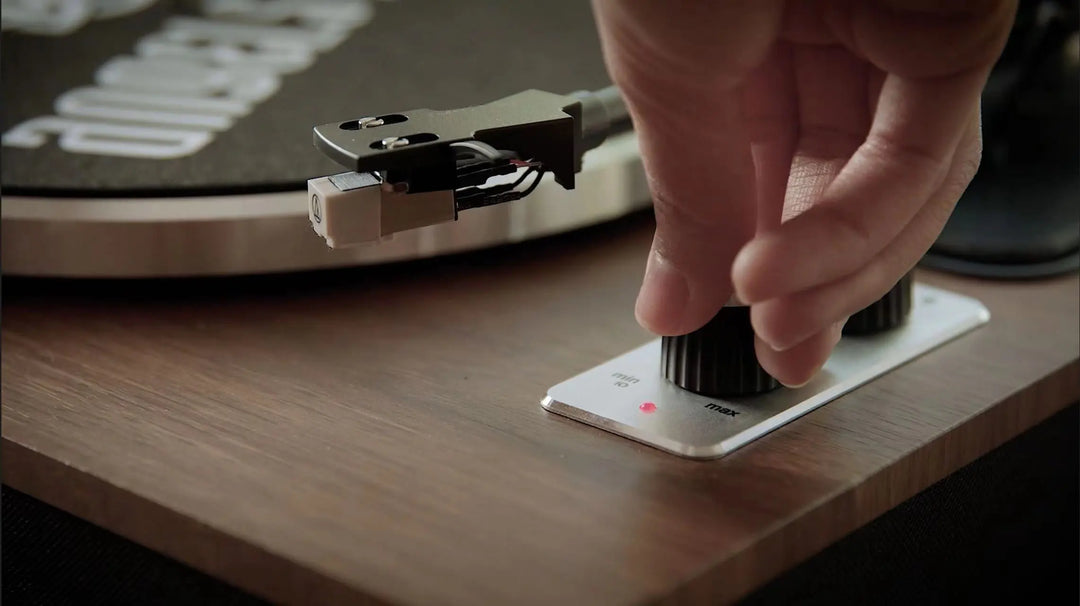
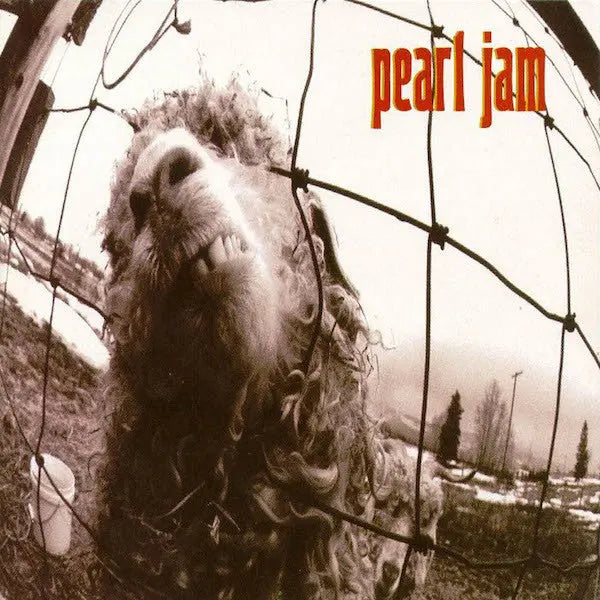
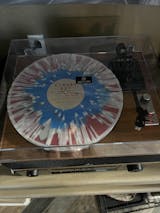
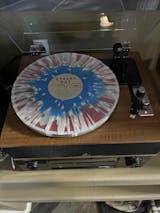

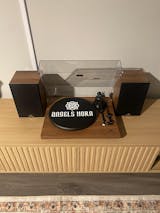


Leave a comment